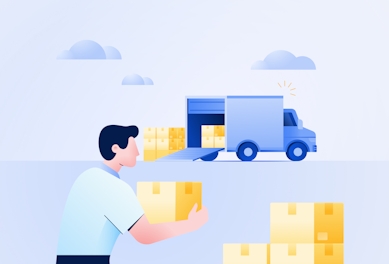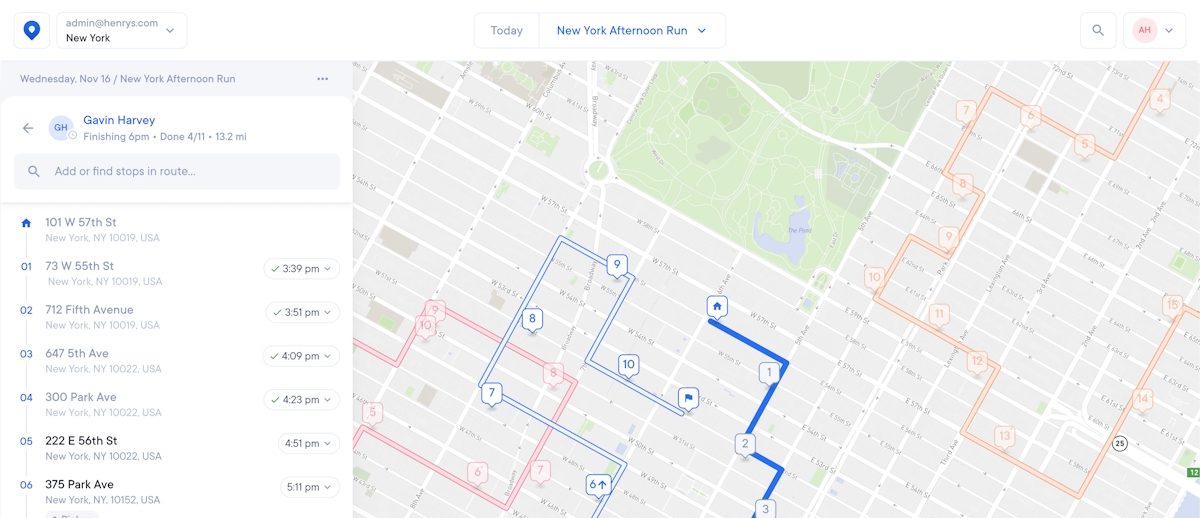Zone Skipping Strategy: Five Benefits for Delivery & Logistics
An effective zone skipping strategy can have drastic time and cost savings for your business. Learn all about it in this handy article!

Use Circuit for Teams to enjoy cost savings on last-mile delivery regardless of whether you’re skipping zones or making multiple stops along the way.
Zone skipping isn’t something you did on the playground in elementary school. It’s a route optimization technique that involves skipping certain shipping zones on your way to your final delivery.
While zone skipping isn’t the right parcel shipping option in every situation, many businesses find that it produces great cost-savings and quicker delivery times. In fact, it’s already expanding and should continue to grow in popularity.
As you read this article, you’ll learn about an effective zone-skipping strategy that can help you grow your business while saving time and money throughout your logistics process.
Key takeaways
- Zone skipping involves a package traveling directly from its point of origin to its final destination.
- It’s a great choice if you often send items to separate locations using less-than-truckload (LTL) shipping methods (especially for high-volume parcel shipments), as it can significantly cut shipping rates and save time by avoiding multiple stops in different zones.
- Zone skipping also reduces the number of times your items are moved and handled in transit.
- Because your items go straight to their final destination, zone skipping allows for more precise ETAs.
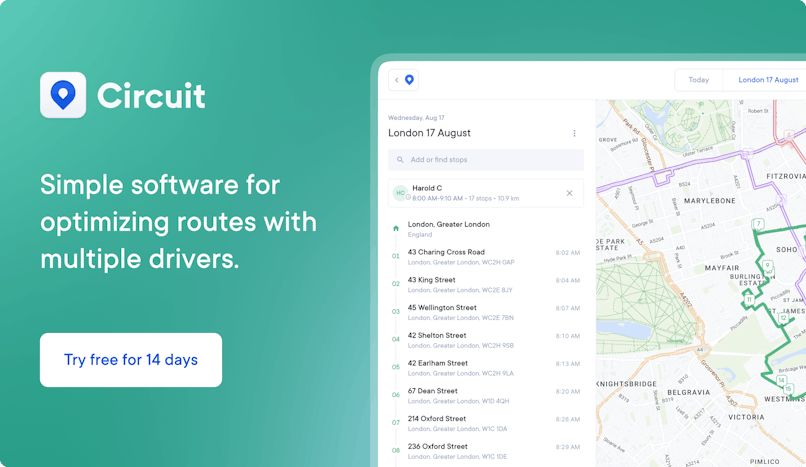
What is zone skipping?
Basically, zone skipping means an item travels directly from the point of origin to the final destination without making stops along the way. You may skip cities or zones in the process, avoiding the cost of shipping across multiple zones.
Here’s a metaphor that might help zone skipping make more sense: Imagine you’re trying to fly from New York to Los Angeles. The fastest way to get across the country would be a nonstop flight since a connection along the way would add several hours to your trip.
Zone skipping is kind of like booking a nonstop flight. You won’t make stops along the way, but you’ll go straight from your starting point to your final destination. The end result is increased delivery speed and (likely) a better customer experience.
An example of zone skipping
So how does zone skipping work? Let’s take the above example and apply it to a shipping scenario.
Pretend there’s an eCommerce shoe company in New York with a load they need to deliver to Southern California. Normally, they would load the shoes onto a truck that would travel across the country, perhaps stopping in multiple zones along the way.
Probably going to take a long time, right? Absolutely. And it can cost more because you’re paying for each stop (even though your items don’t end up there).
Zone skipping is a potential alternative in this scenario. Rather than booking a flight with multiple connections, you’re choosing a nonstop flight to take you directly from New York to LA.
This means customers get a faster delivery than they would otherwise. Your shoes won’t be on a ship waiting to reach their final destination — instead, they could be sitting on a shelf in a store, ready to sell.
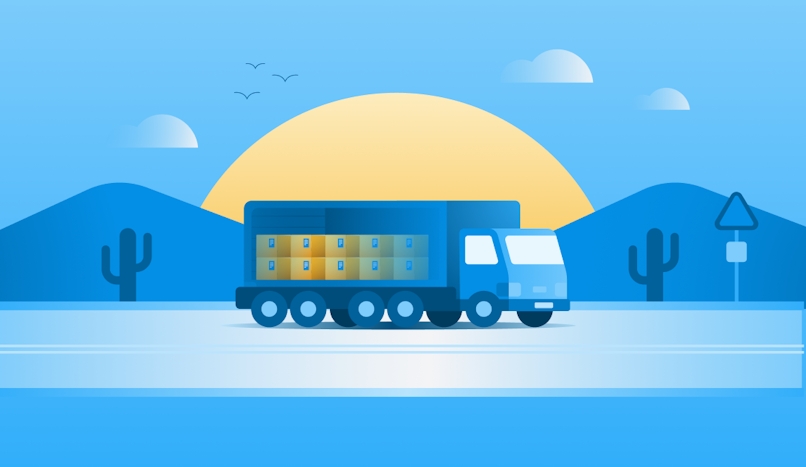
When does it make sense to use a zone skipping strategy?
If you can’t tell, we love zone skipping, especially for high-volume parcel shipments.
However, we also recognize zone skipping isn’t the right fit for everyone. Some parcel shipments are better off using a different shipping logistics technique. Ultimately, the decision is up to you and your business needs.
So, when should you use zone skipping? We’ve found that zone skipping is usually a great choice if you regularly send items to separate locations using less-than-truckload (LTL) shipping methods.
As a quick review, LTL and FTL shipments work differently. A full parcel carrier goes straight from its point of origin to the final destination (much like a nonstop flight).
Companies that often ship consolidated truckloads can save money using an LTL method to get their items to a fulfillment center or delivery point. However, the cost of consolidation is that your items make several stops along the way (like a multi-stop flight).
This isn’t the case with full truckload shipments. Rather than sending everything separately and making a bunch of individual dropoffs in one region, you put your items on the same truck and make the long-haul trip directly to the final destination.
For the shoe shipping company, zone skipping makes sense because the business has a large number of shoes that need to get from New York to LA. The company can save money on a long shipment because it isn’t paying to stop in multiple zones (or wasting time in the process). This means people get their shoes quicker, too.
When zone skipping may not make sense
That’s an example of a scenario where zone skipping makes sense. How about a situation where zone skipping isn’t a good idea?
One example of when zone skipping wouldn’t make sense is if you don’t have a good central location for your shipments.
Zone skipping makes sense if you’re traveling from New York to Los Angeles because that’s where your shoes need to go. However, if you’re a shipper attempting to deliver individual packages throughout the entire state of Florida, for instance, zone skipping may not make practical sense.
Florida is a big state with a lot of heavily concentrated geographical areas, so zone skipping isn't as efficient in the state. Another shipping strategy may be more cost-effective.
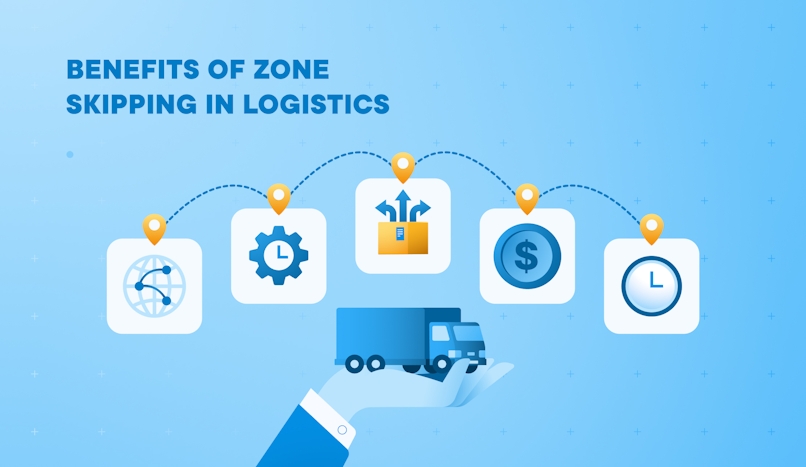
5 benefits of zone skipping in logistics
Zone skipping may not be the right fit in every situation, but there are plenty of times when zone skipping can make a HUGE difference. Here are a few of the top benefits you can experience from implementing zone-skipping into your logistics strategy.
1. Save money on last-mile delivery
Last-mile delivery can get expensive fast. Implementing zone skipping is one way to bring down your transportation costs.
Since you’ll only pay a regional rate (rather than paying for each individual zone), you’ll save a ton of money on last-mile delivery. You’ll pay a regional rate once your items arrive, but you can easily lower shipping costs when you don’t have to pay for each zone your items pass through.
2. Save time on last-mile delivery
Normally, items that stop in multiple regions come off the truck for sorting at each stop. This costs more money and takes more time — not an ideal scenario.
That’s not the case with zone skipping, where your items go straight to their final destination. What might take several days under regular circumstances may only take one or two days, simplifying your last-mile delivery.
3. Fewer touchpoints when moving freight
Most shipments are handled and moved multiple times before they reach their final destination. These “touchpoints” are difficult to track, and each one adds an opportunity for items to get lost or damaged en route.
Zone skipping significantly reduces the number of touchpoints your items experience. Your items are safer in transit, and you won’t have to spend time or money tracking down a missing item or replacing a damaged shipment if those issues arise.
4. Greater shipping flexibility
With traditional shipping methods, you’re stuck with whatever times and conditions a national carrier places on you. You have no choice but to abide by their rules and standards.
5. More consistent transit times
It’s easier for unexpected shipping delays and setbacks to arise when making multiple stops.
Let’s look at another example. Let’s say you thought a shipment of items would arrive at its destination on Tuesday. Before you know it, the shipment is projected to arrive on Friday (and it still has multiple stops to make). This isn’t a great situation for you or your customers.
With zone skipping, shipment delivery times are easier to predict because there are fewer opportunities for delays.
Sure, there’s a chance that the truck hits traffic or blows a tire, but the less a package is handled in shipping, the less chance it has of being mishandled.
Discover how Circuit for Teams can optimize your delivery process
Zone skipping isn’t ideal in every situation, but it can be a great option for certain carriers and shippers. If you have a large shipment that needs to travel to a central location and you typically use an LTL carrier, perhaps zone skipping can benefit you.
Another strategy that might help: Sign up for Circuit for Teams to reduce your last-mile delivery costs (and much more).
Circuit for Teams saves you money by optimizing driver routes for maximum efficiency. Plus, your customers get real-time delivery notifications and ETAs so they know exactly when to expect their items.
Finally, Circuit for Teams adds value to your entire delivery option since it’s specifically designed to help with last-mile delivery after zone skipping. Sign up for Circuit for Teams today and transform your shipping strategies!



